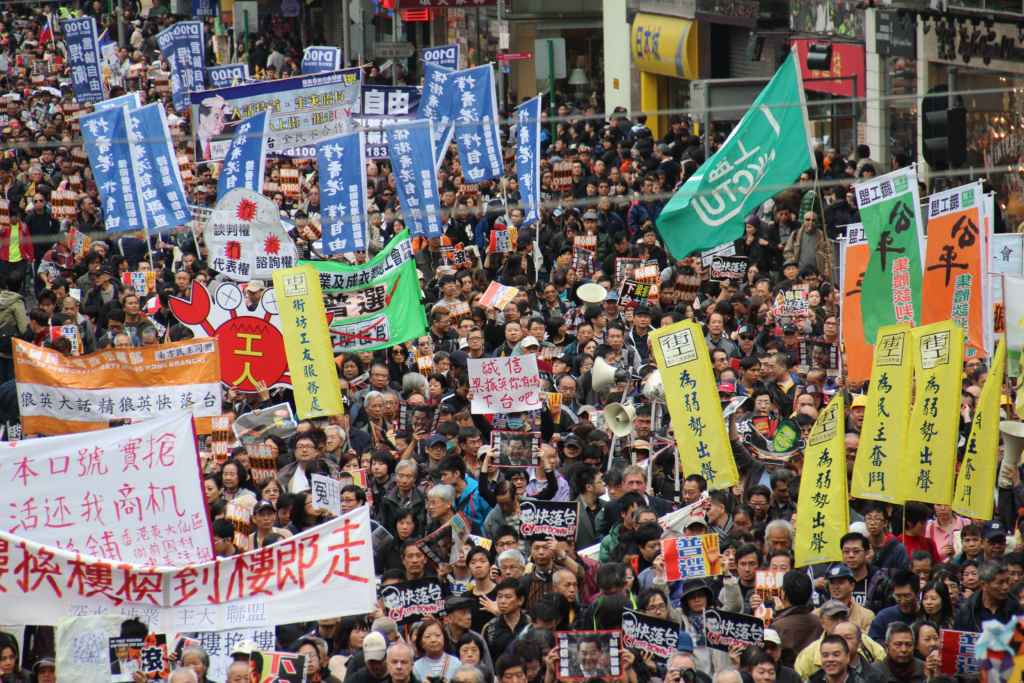In 1989, the world bore witness the Tiananmen Square protests striking a sudden spark of democracy’s flame in China. But all too soon it was snuffed out by the brutality of the Communist Party of China; the death tolls soaring into the thousands.
The world stood pat that day and did nothing. Yet in one corner of the globe, 1.5 million people rallied in solidarity with the citizens of Beijing. The citizens of Hong Kong rallied in support of the protesters in Tiananmen Square, more than a million deep, to demand the freedoms of their fellow man be respected by the Chinese government.
Thirty years later, Hong Kong seeks the protection of freedom and democracy. And just like the protesters in Tiananmen Square, this city is besieged by the People’s Republic of China. The people of Hong Kong, who once stood side-by-side with their brothers and sisters in Beijing, are now facing the extinction of their own liberties and human rights at the hands of Xi Jingping and China. And where the United States failed in 1989, perhaps now it can lead the cause of democracy in China.
Over the last month, the situation in Hong Kong has rapidly deteriorated. Authorities in the city have opened fire on protestors, shooting three. Students at the Hong Kong Polytechnic University have been barricaded in by the police, forcing many to unsuccessfully attempt escapes through the sewers. Thousands have been arrested, and the social instability has led many businesses and residents to consider fleeing the island altogether. A former British consulate staffer for the United Kingdom in Hong Kong revealed he was recently tortured by Chinese authorities over suspicions of supporting the protesters.
There are a few glimmers of hope. Recent elections in Hong Kong delivered a sharp rebuke to Beijing and their preferred candidates. Meanwhile, President Trump signed into law the bipartisan Hong Kong Human Rights and Democracy Act. This prompted an angry response from Beijing, which accused the United States of illegally interfering in the internal affairs of China. And yet, despite recent efforts by lawmakers, the people of Hong Kong remain largely on their own.
The situation in Hong Kong is highly precarious. For one, Hong Kong is recognized as a part of China. The United States cannot simply send in troops to protect the people, as it would be a direct invasion of Chinese territory. It is highly likely that such a brash action would prompt China to immediately invade Taiwan in retaliation.
Direct military intervention is not the answer. The presence of a multilateral military alliance serving as a deterrent, however, might be enough to keep China in check and leave Hong Kong be with its human rights intact. The Trump Administration should entertain resurrecting the abandoned Southeast Asia Treaty Organization (SEATO) or creating a new military alliance with nations such as Australia, Japan, New Zealand, the Philippines, South Korea, and Vietnam to counter Chinese aggression in the far east. While China may feel confident about dealing with the United States on its own, it would likely be a different story of the rest of Asia stood resolutely against the menacing dragon in Beijing.
The United States must also pursue an aggressive economic policy that clamps down on the resources that China desperately needs to fund its military and economy. In particular, cutting off Chinese businesses from capital markets in the United States would cripple their financial sector. Investments in rare-earth mineral mining and production within the U.S. and reaching agreements with resource rich countries in Africa would also break China’s stranglehold on high-tech manufacturing.
If the United States and the free world commits itself to the task of standing for freedom, perhaps the spark of democracy in Hong Kong can one day bathe all of China in the light of liberty. If the world acts now, one day we will see protesters again in Tiananmen Square.
Only this time, instead of dying at the hands of a communist government, the protesters will be tearing down the portrait of Mao Zedong and bringing to an end a dark chapter in human history.

